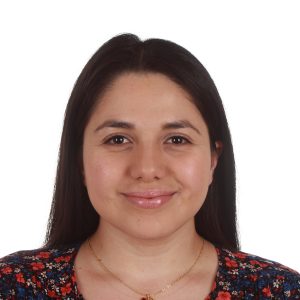
Dr. Lina Forero Quintero
Department: Chemical & Biological Engineering
University: Colorado State University
Lecture: Labeling and Imaging Technology
Date: Thursday June 2 @ 9am-10am
Abstract: We visualized, quantified, and modeled the spatiotemporal organization of RNAP2 phosphorylation at a single-copy gene. Using three-color fluorescence microscopy with antibody-based probes that specifically bind to different phosphorylated forms of endogenous RNAP2 in living cells at single-gene resolution. Applying this methodology in combination with computational models, we found live-cell evidence that genes contain a heterogenous distribution of RNAP2 along their length, with 5-40 copies per transcription site (predominantly phosphorylated in Serine 5 clusters near the promoter). RNAP2 fluctuations are spatially and temporally resolved from those of the nascent mRNA, with most RNAP2 being phosphorylated within 6 seconds, escaping the promoter within ~1.5 minutes, and completing transcription in 5 minutes
Supplemental information:
- Live-cell imaging reveals the spatiotemporal organization of endogenous RNA polymerase II phosphorylation at a single gene
- Regulation of RNA polymerase II activation by histone acetylation in single living cells
Presenter Biosketch: Dr. Linda Forero Quintero obtained her Ph.D. in natural sciences in 2016 from the University of Kaiserslautern, Germany. During her Ph.D. research, she worked on Neurosciences and Brain Energy Metabolism. Dr. Forero characterized the role of monocarboxylate transporters (MCTs) during epileptiform activity using pH and Ca2+ imaging. Currently, Dr. Forero is a postdoctoral scholar at Colorado State University, working under the supervision of Dr. Brian Munsky and Dr. Tim Stasevich. During the first part of her postdoc, Dr. Forero studied the timing, kinetics, and spatial organization of RNA Polymerase (RNAP2) phosphorylation along a single-copy gene in living cells. She combined multi-color, single-molecule microscopy with fluorescent antibody-based probes that specifically bind to unphosphorylated and phosphorylated forms of the CTD tail of RNAP2 in living cells. In he present research, Dr. Forero is investigating how to improve smFISH methodology to reduce experimental costs by predicting the most-cost effective experimental designs and automating image collection and processing.
Presenter Email: Linda.Forero_Quintero@colostate.edu